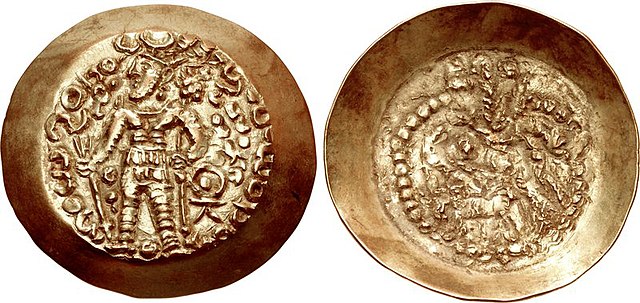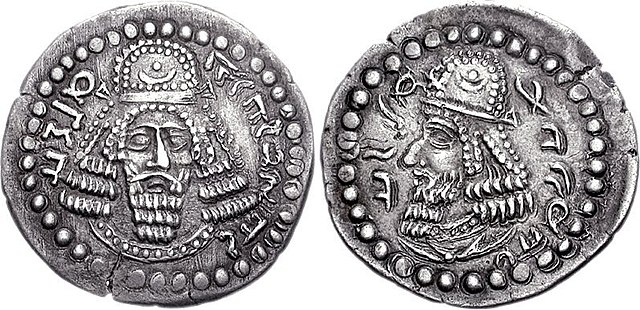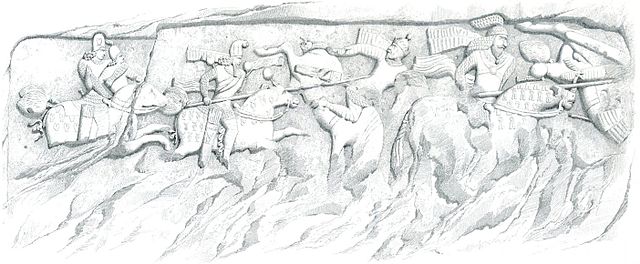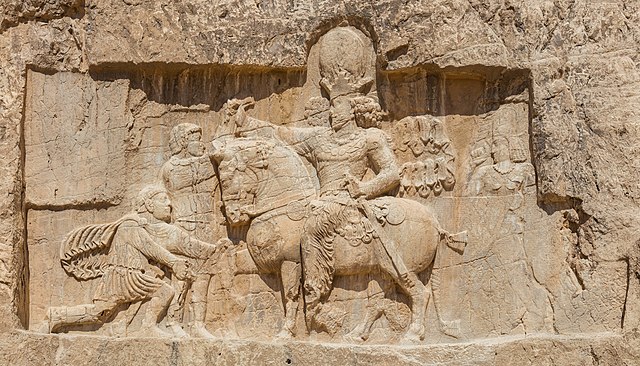Peroz I was the Sasanian King of Kings of Iran from 459 to 484. A son of Yazdegerd II, he disputed the rule of his elder brother and incumbent king Hormizd III, eventually seizing the throne after a two-year struggle. His reign was marked by war and famine. Early in his reign, he successfully quelled a rebellion in Caucasian Albania in the west, and put an end to the Kidarites in the east, briefly expanding Sasanian rule into Tokharistan, where he issued gold coins with his likeness at Balkh. Simultaneously, Iran was suffering from a seven-year famine. He soon clashed with the former subjects of the Kidarites, the Hephthalites, who possibly had previously helped him to gain his throne. He was defeated and captured twice by the Hephthalites and lost his recently acquired possessions.
Plate of Peroz I
5th-century drachma of the Kidarite ruler, Kidara. The legend, in Brahmi letters, reads: kidara kushana shah.
Gold dinar of Peroz I minted at Balkh in 466, shortly after he put an end to Kidarite rule in Tokharistan. He is depicted on the obverse, wearing his second crown
Drachma minted by a Hephthalite ruler, with the obverse showing a close imitation of the coinage of Peroz I wearing his third crown
The Sasanian Empire or Sassanid Empire, officially known as Eranshahr, was the last Iranian empire before the early Muslim conquests of the 7th to 8th centuries. Named after the House of Sasan, it endured for over four centuries, from 224 to 651, making it the second longest-lived Persian imperial dynasty after the Arsacids of the Parthian Empire.
Initial coinage of founder Ardashir I, as King of Persis Artaxerxes (Ardaxsir) V. c. 205/6–223/4 AD. Obv: Bearded facing head, wearing diadem and Parthian-style tiara, legend "The divine Ardaxir, king" in Pahlavi. Rev: Bearded head of Papak, wearing diadem and Parthian-style tiara, legend "son of the divinity Papak, king" in Pahlavi.
1840 illustration of a Sasanian relief at Firuzabad, showing Ardashir I's victory over Artabanus IV and his forces.
Rock relief of Ardashir I receiving the ring of kingship by the Zoroastrian supreme god Ahura Mazda.
Rock-face relief at Naqsh-e Rostam of Persian emperor Shapur I (on horseback) capturing Roman emperor Valerian (standing) and Philip the Arab (kneeling), suing for peace, following the victory at Edessa.








